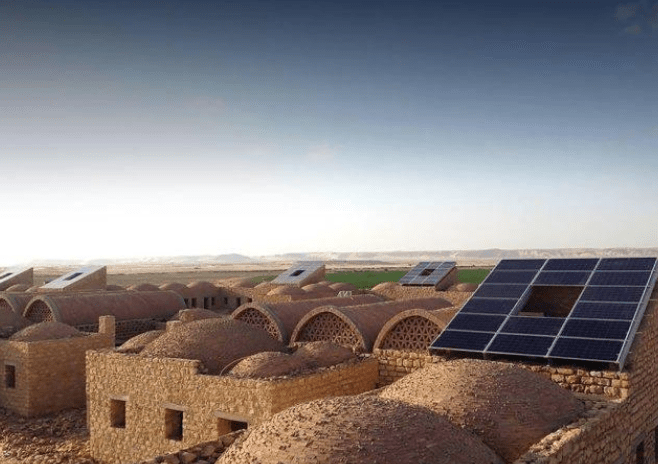By Omar Gouda
Solar energy adoption is accelerating across the Middle East and North Africa. In 2024, the region’s installed solar capacity reached around 24 GW, a 25% increase from the previous year.
The growth isn’t limited to large utility-scale projects. Businesses and individuals are stepping in, contributing to a broader shift toward decentralized and locally driven solar deployment.
Egypt: A Game Changer for Private Solar

Egypt’s solar home market is gaining momentum, with more local providers delivering rooftop solar power to households nationwide. Among the most active players is The Solar Company, a subsidiary of SolarizEgypt, which reports over 400 residential units already installed since launching in 2019.
Infinity, one of Egypt’s most recognizable clean-energy brands, recently partnered with Crédit Agricole Egypt to offer a seven-year solar loan program, opening the door for more homeowners to finance rooftop installations and cut reliance on grid power.

Not only are Egyptian homes getting a solar makeover. A few months ago, the government approved four renewable energy projects (solar and solar-wind hybrids) totalling 400 MW, under a new “private-to-private” (P2P) framework allowing direct supply to industrial consumers.
These projects represent about $388 million of investment and mark a shift in how electricity generation is being structured.
From Egypt to the Wider Region
Egypt’s experience signals a broader transformation unfolding across the MENA region. With expansive desert landscapes, high solar irradiation levels (around 2 to 2.5 MWh/m² annually), and falling photovoltaic costs, the region is well positioned for both large-scale and distributed solar deployment.
At the same time, manufacturing and supply-chain dynamics are evolving. By 2029, MENA’s solar manufacturing capacity is expected to reach 44 GW, strengthening its role not just as a consumer but as a global supplier of solar hardware.
Why This Shift Matters
The solar transition in MENA delivers a wide range of benefits: falling costs have made solar more competitive than fossil fuels in high-irradiation zones, while distributed and private systems enhance energy security by reducing reliance on central grids and fuel imports.
Increased solar adoption also supports climate goals, creates jobs in emerging technologies, and fosters a local clean-industry ecosystem. Countries across the region are shifting from fossil-fuel export models to becoming solar hubs.
Challenges Still Lie Ahead
Despite rapid solar growth across MENA, several challenges remain. Rules around grid access, pricing, and selling power need to be addressed. Solar power depends on the sun, so better batteries and smarter grids are needed to store and manage energy.
Local factories are starting to make solar equipment, but they’re still behind global companies. Also, old fuel subsidies and slow policy changes make it harder for solar to compete.



